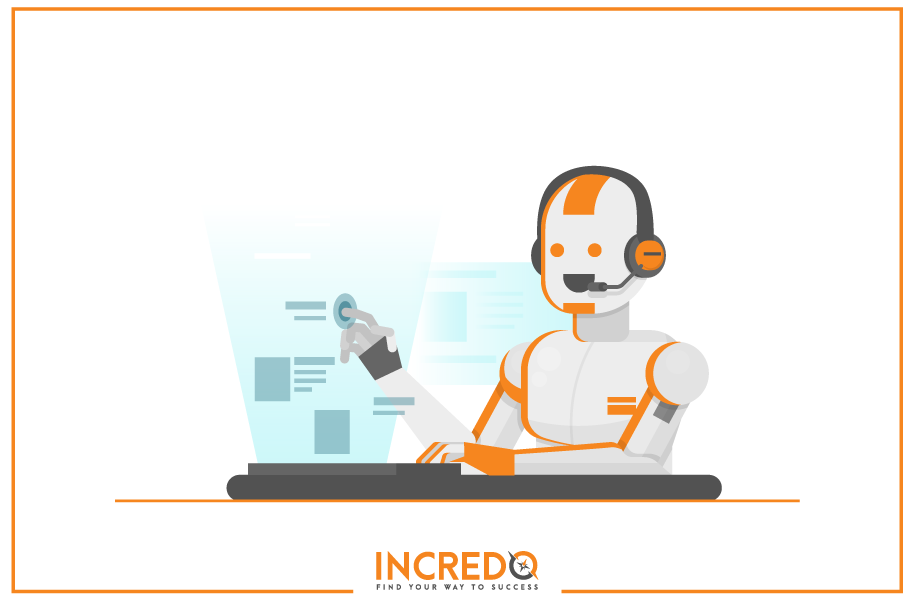What is the next wave of SaaS development? AI, AR/VR, Bots and Blockchain in SaaS 3.0

What is the next wave of SaaS development? AI, AR/VR, Bots and Blockchain in SaaS 3.0
People had many extraordinary inventions in mind for the approach of the 21st century: flying cars, robots, time machines, and many more. Although we don’t really have any of those yet, technology is bringing us closer to these innovations every day. For our primary focus, we’ll look at the evolution of SaaS (Software as a Service) development to understand how far it has come along and what to expect in the near future. Currently, SaaS applications are used for a variety of means such as office management software for businesses, gamification, CRM, and many others since the majority of businesses especially are incorporating some form of SaaS to their daily use. It has underwent upgrades and transformations since the initial concept and will continue to meet the needs of modern society and ever-growing development.
Evolution of SaaS

Anyone who uses technology on a daily basis loves to refer to the ‘cloud’ as a trendy tech term, but many don’t know that cloud computing has been around as early as the 1960s when the first SaaS companies emerged. SaaS is only one standard model of cloud computing — which also includes IaaS (Infrastructure as a Service) and PaaS (Platform as a Service). It is a centrally hosted software distribution model which allows clients to run applications on a cloud infrastructure. Thanks to this, the applications become accessible from a variety of devices through a thin client, such as a browser, instead of requiring mandatory installation. With SaaS apps, the vendor is the only controller of the infrastructure while the clients are only responsible for the application and don’t interfere with the settings in the cloud.
In its initial years, what is commonly referred to as SaaS 1.0, the software was created for the purpose of time-sharing, utility computing, and database storage for larger corporations to access. SaaS licenses began being issued with upfront payments and then transferred mostly to functioning on a subscription basis. Thanks to this payment model, acquiring the service wouldn’t be as costly right in the beginning and instead gradually charged based on the usage by the client.
SaaS is also commonly referred to as an extended version of another cloud computing model which emerged during the same time frame called ASP (Application Service Provider). Although they are similar for offering application software to clients by a host, ASPs are commonly used on a limited range of people. This was beneficial for small or medium businesses who could access the application through installation on their nearby devices. While this was effective for smaller groups of clients, it held back the opportunities of multi-tenancy which was later offered by SaaS.
Salesforce.com is a common example of a specialized SaaS company which was launched almost 20 years ago and exists to this day. Salesforce is a cloud computing and SaaS provider which is best known for its CRM (customer relationship management) product and cloud services for B2B and B2C support. This is a prime example of a company which evolved along with the journey of SaaS development. By entering the modern digital age, Salesforce’s Einstein was an artificial intelligence CRM tool recently launched to the public which shows how much SaaS has grown over time, but we’ll go more in-depth of AI later on.
SaaS products evolved with the beginning of the 21st century and what slowly transitioned into the period of SaaS 2.0. Though there isn’t a concrete date, SaaS 2.0 became notable around 2010. This transition concentrates more on tailoring the SaaS applications for consumer use and making it business-centric instead of only focusing on the cost-efficient software itself. While the underlying infrastructure of the software is valuable, the 2.0 wave strives to meet the non-technical needs of business models. This leads to the creation of SaaS applications and products which become relevant for everyday use of both individuals and businesses.
Popular apps such as Atlassian, Airbnb, and others began appealing to audiences worldwide alongside the increasing development of mobile applications. The apps were proven to be useful and bring profit which lead to an increased demand of SaaS apps like this. In order to keep up with the times and meet the needs of consumers, the apps also had to upgrade onto mobile and tablet versions to remain relevant for users on the go. Soon enough, apps like Atlassian, which offers popular task management products Jira and Trello, allowed users to effectively tap into their resources and carry out business management at their fingertips.
SaaS 3.0 and Beyond
Specialists in the field believe that we’re currently entering the wave of SaaS 3.0 and making the transition to an even more innovated version of what was present. With vendors having the need to keep clients motivated to continue with monthly subscriptions and the increasing importance of customer satisfaction, SaaS 3.0 is gradually offering new approaches to resolve these.
People have been interested in researching and tweaking around with artificial intelligence for a while now but the most effective results began emerging only in the past decade. We are used to human intelligence and rationality so we started experimenting with technology to see if it has the capability of developing natural intelligence as well. At the current stage of AI, machines are able to detect human speech and formulate responses, as well as basic gaming concepts. There still is a long way to go towards ideal AI, but that certainly hasn’t stopped it from becoming relevant for our daily use.
With the increased demand of AI technologies which have proven to bring efficient solutions to customer experience and satisfaction, more and more SaaS companies small or big are interested in investing their time and resources in it. SaaS giants like Google Cloud are taking full capability of their technologies of the cloud to develop effective AI products. This is paving the path to making “AI as a service” a new topic of interest. While AI development isn’t a simple task, it still relies on basic programming languages to create, primarily: Python, Java, Prolog, and Lisp.
Besides mimicking human understanding and rationality through AI, we’ve also come up with a way to bring our perception into a virtual portal as well and alter it to an extent. This was made possible with VR (virtual reality) and AR (augmented reality) technologies which combine live human experiences with technology. AR is when reality exists as it does, but you have a digital overlay. A mainstream example of this is taking a selfie with the dog filter on Snapchat: your reality is combined with a digital overlay of a dog. VR/AR is boosting user interaction with apps both for entertainment and productivity by tying it in with basic daily actions. Augmented shopping, for example, will give clients a chance to shop and visualize which items they want to buy over others. Similarly, implementing VR business meetings are becoming mainstream for busy companies.
Another gamechanger in the world of SaaS is the use of blockchain technologies. In brief, with blockchain, records of data are chained together with none other than blocks which are publicly readable but difficult to alter due to the chain structure. The first blockchains were used for the purpose of denying users to tamper with the timestamps of the records, but the concept wasn’t a public phenomenon until the creation of Bitcoin in 2009. Without getting too much into the mechanics of it, blockchain became valuable for SaaS products because of the security and decentralization of information it provided, making valuable data more difficult to breach or alter in the cloud. Blockchains are mostly used for companies that require transactions to ensure a safe and reliable third-party to oversee the process.
A noticeable change in SaaS development is the concept of making customer satisfaction and user experience a simpler task with reduced manual labor. Remember in the beginning how we mentioned that we’re actually not that far from robot technology? The idea of chatbots is sort of a step towards that new approach to technology. Chatbots are a single aspect of AI emerging into the world of business and they are referred to in a variety of ways including: bot, chatterbot, talkbot, artificial bot, and so on. Despite whichever name you prefer, the underlying function of the bots is all the same: they are an artificially intelligent technology capable of simulating human conversational interaction. Chatbots also have been in the making for about 50 years and evolved from mimicking basic human interaction all the way to understanding full concepts.
Having a machine which can detect textual or auditory signs of human language is fascinating, but exactly how does this affect business? In reality, there are a few different types of chatbots out there which serve various purposes. Chatbots exist in the form of virtual assistants which became a trending product for every household in recent years. You may be familiar with Google assistant and Amazon Alexa which are among the top choices. Virtual assistants can carry out a variety of functions from playing music via the internet or turning on and off the lights of your house merely based on voice command.
Besides a physical product, chatbots and AI are mostly relevant in the online world — unsurprisingly. While in the heat of the moment, many companies are creating and implementing chatbots into their businesses to improve customer service via the internet. One of the most notable examples of chatbot implementation into business strategy is the use of it in Facebook Messenger. When you decide to open a business page on Facebook and receive tons of messages per day, you need someone to answer them. With chatbots, you are able to lessen the weight of manual labor for specialists that will have to sit around and answer messages all day.
Chatbots can differentiate between unique and basic content with keyword detection in order to find an appropriate answer to the message. For example, the chatbot may be regulated to answer “Yes” when asked “Do you offer delivery?” for a flower shop. Thanks to this, the social media specialist doesn’t need to waste time answering “Yes” to each person who asks that question. For companies with a larger social media footprint or heavy online customer flow, this is very useful to weed out messages that can be answered automatically. Besides this, the bots are prone to learning patterns of answers to specific types of questions which means they can learn to give more advanced answers over time. The simple “Yes” or “No” answers can evolve into accepting orders from clients by asking for their information automatically and so on.
Despite being a time-and-resource-saving new tool to implement into a business strategy, chatbots aren’t as simple as they seem. Especially when companies viewed it as something to acquire without fully understanding how to work around it first. The bots aren’t professionals right after implementation, it takes supervised development and nurture for the bot to acquire the right approach for each company. Some companies expect the bots to resolve all of their issues immediately without proper resources, which is the common factor of bot failures. Nonetheless, chatbots are used by a majority of businesses and each company is expected to make use of at least one form of bot or AI technology by the year 2020.
It seems like a lot to take in, but in reality this was the evolution of SaaS development in brief by underlining the milestones of the progress it’s made over the past several decades. When getting into the details of every aspect, there’s still a lot to uncover about each. This is how fast our technology develops before we even have a chance to acquire a complete understanding of all the ones we have now. SaaS started out as a means to operate applications in the cloud and evolved into a high-tech 3.0 stage with implementations of AI and more. As our needs change and the reliance on technology increases, it’s not a surprise that innovation is going to move forward and we can only assume the direction it will take.
Tags:
SaaS Development
August 6, 2018


Comments